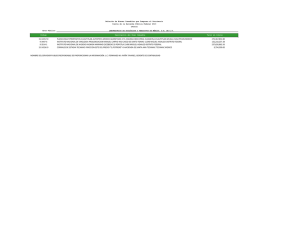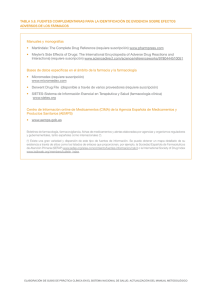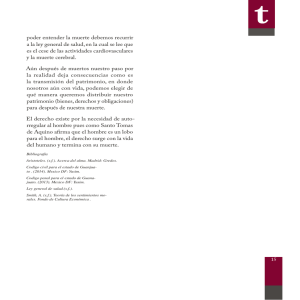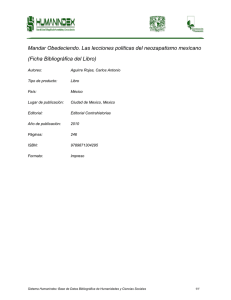14 years later: The spread of drug crime in Mexico
Anuncio
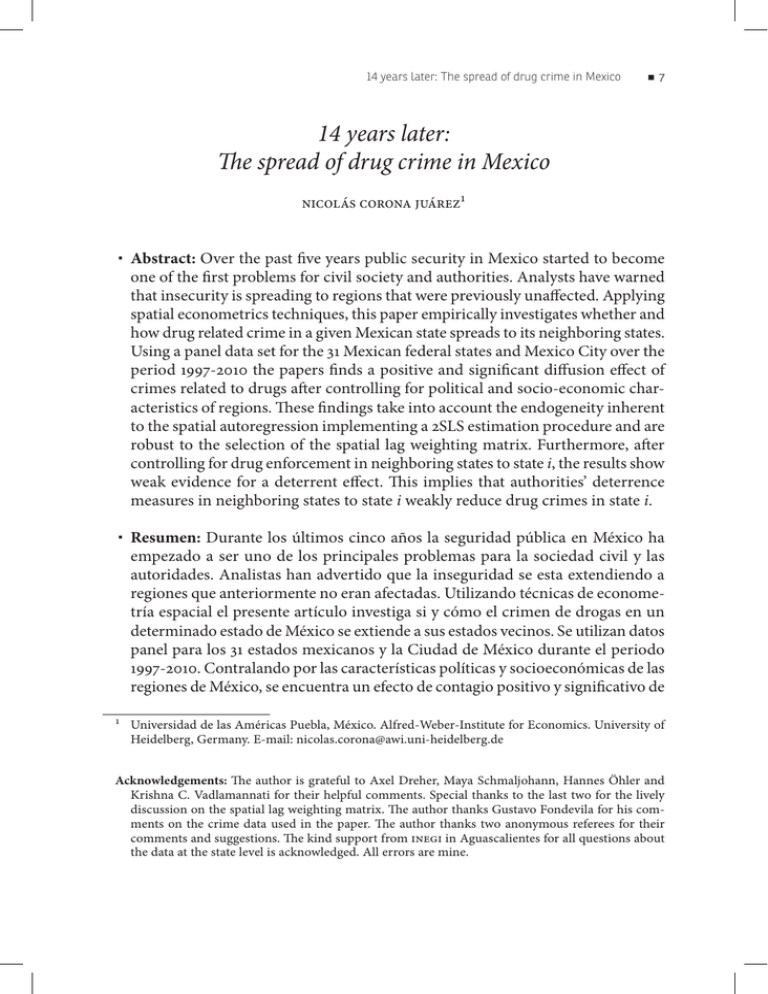
14 years later: The spread of drug crime in Mexico p7 14 years later: The spread of drug crime in Mexico Nicolás Corona Juárez1 ■■ Abstract: Over the past five years public security in Mexico started to become one of the first problems for civil society and authorities. Analysts have warned that insecurity is spreading to regions that were previously unaffected. Applying spatial econometrics techniques, this paper empirically investigates whether and how drug related crime in a given Mexican state spreads to its neighboring states. Using a panel data set for the 31 Mexican federal states and Mexico City over the period 1997-2010 the papers finds a positive and significant diffusion effect of crimes related to drugs after controlling for political and socio-economic characteristics of regions. These findings take into account the endogeneity inherent to the spatial autoregression implementing a 2SLS estimation procedure and are robust to the selection of the spatial lag weighting matrix. Furthermore, after controlling for drug enforcement in neighboring states to state i, the results show weak evidence for a deterrent effect. This implies that authorities’ deterrence measures in neighboring states to state i weakly reduce drug crimes in state i. ■■ Resumen: Durante los últimos cinco años la seguridad pública en México ha empezado a ser uno de los principales problemas para la sociedad civil y las autoridades. Analistas han advertido que la inseguridad se esta extendiendo a regiones que anteriormente no eran afectadas. Utilizando técnicas de econometría espacial el presente artículo investiga si y cómo el crimen de drogas en un determinado estado de México se extiende a sus estados vecinos. Se utilizan datos panel para los 31 estados mexicanos y la Ciudad de México durante el periodo 1997-2010. Contralando por las características políticas y socioeconómicas de las regiones de México, se encuentra un efecto de contagio positivo y significativo de 1 Universidad de las Américas Puebla, México. Alfred-Weber-Institute for Economics. University of Heidelberg, Germany. E-mail: [email protected] Acknowledgements: The author is grateful to Axel Dreher, Maya Schmaljohann, Hannes Öhler and Krishna C. Vadlamannati for their helpful comments. Special thanks to the last two for the lively discussion on the spatial lag weighting matrix. The author thanks Gustavo Fondevila for his comments on the crime data used in the paper. The author thanks two anonymous referees for their comments and suggestions. The kind support from INEGI in Aguascalientes for all questions about the data at the state level is acknowledged. All errors are mine. 8p EconoQuantum los crímenes relacionados al tráfico de drogas. Estos hallazgos toman en cuenta la endogeneidad inherente a la regresión espacial utilizando una estimación 2SLS. Los resultados son robustos a la selección de la matriz ponderadora de rezagos espaciales. Además se encuentra una evidencia débil de un efecto disuasivo en los estados vecinos al estado i al controlar por medidas coercitivas contra las drogas. Esto implica que las medidas de disuasión de las autoridades en los estados vecinos al estado i reducen débilmente los crímenes de drogas en el estado i. ■ Keywords: Drug Crimes, Mexico, Spatial Econometrics, Panel Data ■ JEL Classification: C33, O17,O54. ■ Recepción: 27/11/2013 . Aceptación: 14/02/2014

